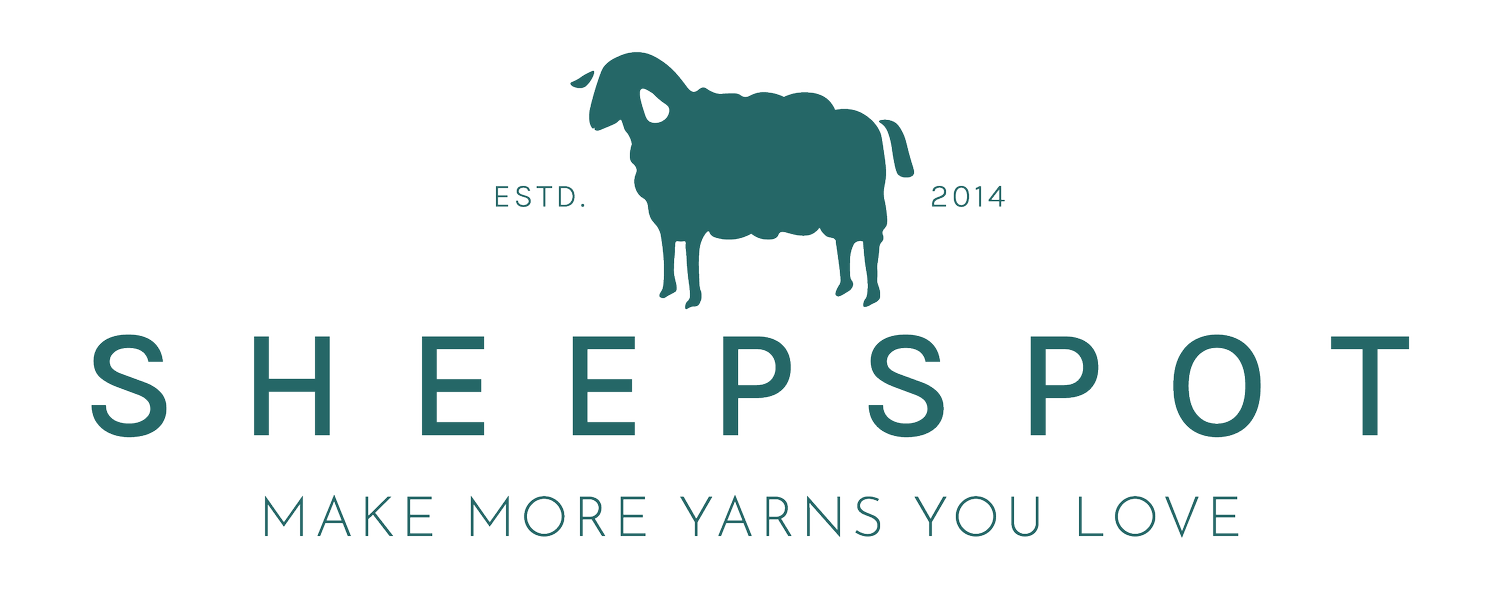Look again
I’ve written before about how I develop colorways by working from photographs. I usually start by cruising Pinterest for images that I love the look of. For me this is an intuitive process. I don’t do a whole lot of analysis of the colors in the photo or of their relationships on the color wheel (a topic for a while other post). I just let myself go on instinct. Then I pull five or six colors out of the image using software that analyzes the colors of individual pixels and blows them up into larger swatches. Of course, there are often many, many colors in the photo, so this is a highly selective process. Though there are some basic principles I use while doing this (that post is coming too), sometimes I do better than others in selecting the hues—and the relationships between them—that have made the picture appealing to me in the first place. So sometimes I end up with a result I love, and sometimes I don’t.
Higher Ground/Ascend, take one
This weekend I was working with a colorway that I didn’t love. It’s called “Higher Ground” on yarn, and “Ascend” on fiber (I tend to use song titles to name multi-hued colorways on yarn, and verbs to name them on fiber. Just to keep things simple. Not.) I developed Higher Ground from a photograph that I loved, but the colorway itself felt very flat to me.
In thinking—lying in bed one night—about how to liven it up, I decided I should probably add something from the other side of the color wheel, a trick I learned from Gail Callahan, the “Kangaroo Dyer.” So my plan was to play with that idea a bit and see what happened. Just before I went into the studio, though, to do just that, I happened to look again at the original photograph.
I found this picture on Pinterest, but was able to track it down to photographer Tammy Hughes' website.
And there it was, staring me in the face all along–that dark brown in the bottom half of the picture. Some browns, like that one, are essentially oranges with a lot of black in them. So there had been something from the other side of the color wheel in the photograph. I just hadn’t noticed it or understood its importance to the color relationships in the picture.
Once I understood that the dark brown was a crucial piece of the of the puzzle, I dyed some fiber. I used exactly the same colors that I had used before, added a rich dark brown, and was astounded by the difference. I like the new version so much more.
The new and improved version, on Bond pencil roving
This whole experience is a good reminder that I tend not to take into account the role that the darkest values play in the photographs from which I’m working. That was the issue with another colorway, “Daylight Fading/Evanesce,” that didn't translate so well from photograph to fiber, and which I wrote about in my newsletter. So that’s the one I’m going to work on next, adding in the nearly black, smokey purple of the branches and seeing what difference it will make.
PS: If you like this colorway, it's now available in the shop in Bond, Coopworth, Dorset Down, Montadale, Organic Polwarth, Shetland, Suffolk, and Targhee!





